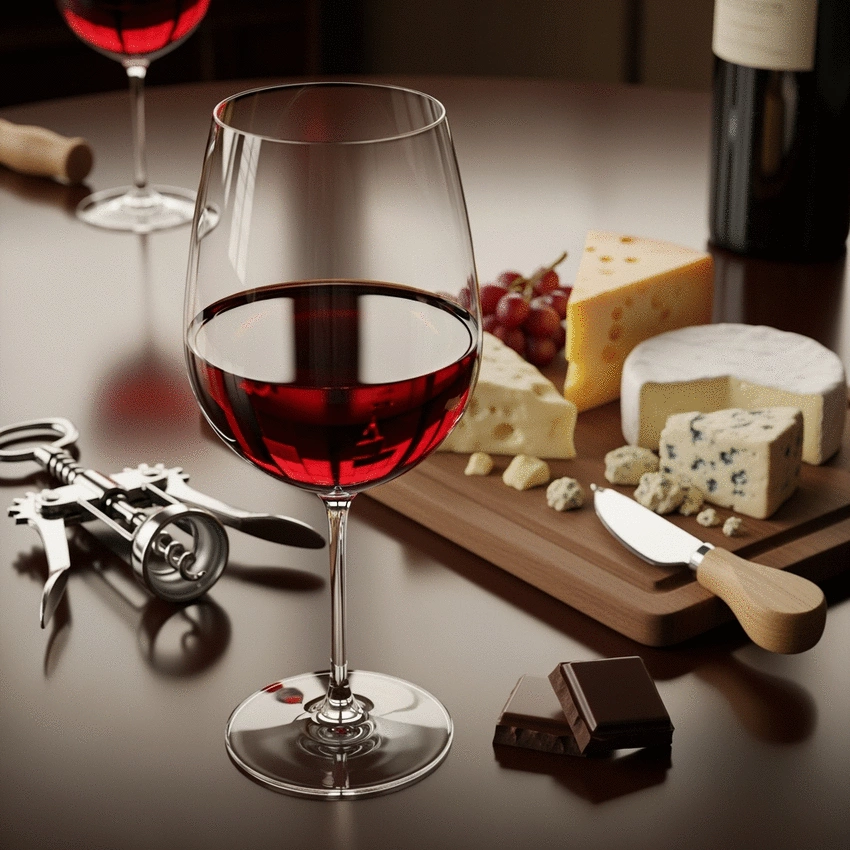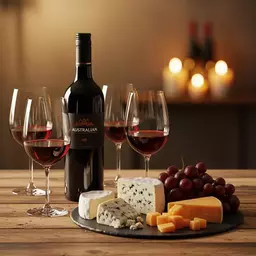Choosing the Right Australian Red Wine
By Clara Hastings / Nov 02
As you delve into the world of red wine, consider this: the experience is as much about the journey as it is about the destination. Each glass unveils a story, a landscape, and a culture waiting to be explored. Ready to embark?
Embark on a sensory adventure to refine your wine appreciation. This visual guide highlights key elements crucial for understanding and savoring red wines.
These create structure and a drying sensation. Think of strong tea or unsweetened dark chocolate.
Adds freshness and balance, making the wine lively. Similar to the zest of citrus or crisp green apple.
Refers to the weight of the wine in your mouth. Can be light (water-like) to full-bodied (milk-like).
Record wine name, appearance, aroma, tasting notes, and overall impression to refine your palate.
Welcome to your red wine tasting journey! It can feel a bit overwhelming at first, but don't worry—I'm here to guide you through. As you embark on this flavorful exploration, you’ll discover the richness and diversity of Australian red wines. This introduction will help you grasp what to expect as you start developing your palate.
When you participate in a wine tasting, think of it as a delightful adventure! You’ll engage your senses and learn how to distinguish various characteristics, from aromas to flavors. Along the way, you’ll find yourself gaining a deeper appreciation for the unique qualities that different red wines can offer. To learn more about the vast array of wine styles and types available, you can explore resources like WSET Global's guide to wine types and styles.
As you taste, pay attention to how each wine feels in your mouth—the texture can tell you a lot! This process is not just about drinking; it's about immersing yourself in the experience. Enjoy the company of fellow enthusiasts, sharing insights and tastes that will enrich your understanding.
Developing your palate is crucial for becoming a confident wine enthusiast. It's all about honing your ability to recognize and appreciate the subtle nuances in different wines. The more you practice, the more skilled you'll become at identifying flavors, which enhances your overall enjoyment.
As you refine your palate, you'll find it easier to choose wines that suit your taste. This understanding can lead to more fulfilling meal pairings and exciting discoveries in the world of red wine. So, grab your glass and let’s get tasting!
Understanding these fundamental aspects of red wine will not only deepen your appreciation but also help you make better choices when selecting a bottle. Each varietal brings its own combination of these elements, creating a tapestry of flavors waiting for you to explore. Enjoy the journey, and remember to savor every sip!
As you delve deeper into the world of red wine, consider this: What has been your most memorable wine tasting experience so far? Perhaps it was a unique varietal that surprised you or a delightful pairing that opened your eyes to new flavors. Share your stories and insights below to inspire others on their journey!
Once you’ve begun your journey into the world of red wine, it's important to keep track of your progress. One effective way to do this is by creating a personal wine tasting journal. This journal can serve as a valuable resource, allowing you to reflect on your experiences and refine your palate over time!
In your journal, you can jot down notes about the wines you taste, including their flavor profiles, aromas, and any insights you gain. This practice not only sharpens your observational skills but also enhances your overall enjoyment of each tasting experience. Here’s what to include in your tasting journal:
By keeping a detailed record, you’ll find it easier to identify patterns in your preferences and develop a deeper understanding of what you enjoy in a glass of red wine.
One of the most rewarding aspects of exploring red wine is connecting with others who share your passion. Engaging with the wine community can provide valuable insights and help you learn more about different varietals and winemaking techniques. Plus, there’s so much joy in sharing these experiences!
Here are a few ways to get involved:
Participating in wine tasting events is a fantastic opportunity to expand your palate. These gatherings allow you to taste a wide range of wines, often curated by experts who can provide valuable context about each selection. I remember my first tasting event at a local vineyard, where I was amazed by the diversity of flavors and aromas!
Here are some benefits of attending these events:
As you embark on the next steps of your wine education journey, remember that the world of red wine is vast and ever-changing. Continuing to learn and explore will enhance your enjoyment and appreciation for this delightful beverage!
To further your wine knowledge, consider utilizing various resources at your disposal. There are books, websites, and even podcasts that can provide deeper insights into red wines and the art of tasting.
Why not take your newfound skills and share them with friends? Hosting your own tasting event is a wonderful way to create memorable moments while deepening your understanding of red wine. Gather a few bottles, some snacks, and invite your favorite wine-loving pals over!
Here’s a simple plan for hosting your tasting:
Finally, consider enrolling in online wine courses! Many platforms offer structured lessons about red wine, from the basics to advanced topics. This can be an excellent way to deepen your knowledge at your own pace.
Additionally, joining online wine clubs can provide you with curated selections and educational materials that suit your interests, ensuring an enriching experience for you as a wine enthusiast!
Here is a quick recap of the important points discussed in the article:

 Choosing the Right Australian Red Wine
Choosing the perfect Australian red wine can significantly enhance your dining experience. Are you r
Choosing the Right Australian Red Wine
Choosing the perfect Australian red wine can significantly enhance your dining experience. Are you r
 Australia's Red Wine Regions Explored
The journey through Australia's red wine landscape is as rich and varied as the wines themselves. Ha
Australia's Red Wine Regions Explored
The journey through Australia's red wine landscape is as rich and varied as the wines themselves. Ha
 Sustainable Red Wine and the Earth
What if your wine choices could help save the planet? Sustainable red wine production not only ensur
Sustainable Red Wine and the Earth
What if your wine choices could help save the planet? Sustainable red wine production not only ensur